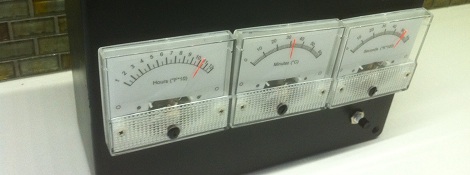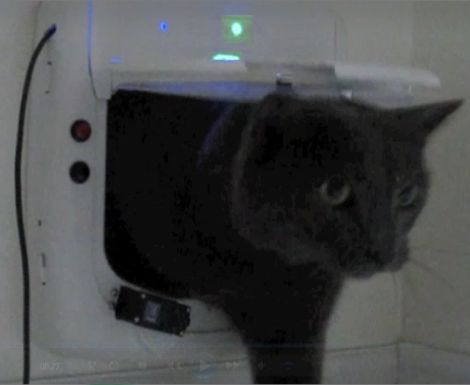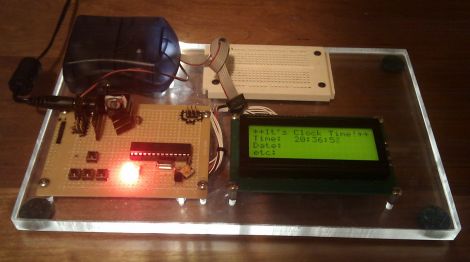[IronJungle] got around to putting together every tinkerers favorite project: a clock with a strange way of displaying the time. For his clock, [Jungle] took a trio of voltmeters and turned them into a clock that displays the current hour, minute, and second on custom paper dials.
[IronJungle] connected a PIC 14M2 microcontroller to a DS1307 real time clock to keep track of the current time. As for display, [Jungle] took a trio of volt meters and wired them in to the PWM outputs on his PIC. With this, he was able to precisely control the position of the needle in the meter, and thus display the time.
In addition to displaying the time, [IronJungle] added a small temperature sensor to his build. By pressing a button below the seconds display, the clock is able to display the current temperature in Fahrenheit, Celsius, and Kelvin.
After the break you can check out a time-lapse video of [IronJungle]’s voltmeter clock going through the hours.
Continue reading “Volt Meter Clock Also Displays The Temperature”
















